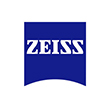The press shop at BMW‘s Dingolfing plant relies on optical metrology systems including automation and standardization for inspection of shee t metal components. Here, 3D coordinate measuring technology from GOM sets completely new standards, offering high time-saving potential since sensor, automation and inspection software all come from a single-source provider. The automation processes in particular, have been subjected to continuous development in close collaboration with BMW.
The automotive supplier GEDIA is taking a new approach to quality control. The company is replacing measuring technology based on tactile systems and gauges with full-surface optical 3D coordinate measurement. The implementation of optical metrology systems is making GEDIA more flexible. It i s cutting costs and reducing measurement times.
Simulation of forming processes has become an important tool for the current process optimization. It can be supported significantly by modern optical measuring methods based on digital image processing providing full-field information of 3D surface geometry (ATOS) and strain and thickness reduction distributions of formed sheet metal parts (ARGUS). These optical systems have become important tools in industrial tool making and sheet metal forming processes in the last years and together with the simulation of forming they have significant potential for quality improvement and optimization of development time for products and production.
It was in France in the mid-1960s that the great American supercar came to life. A low-slung, muscular racing car built to win on the legendary Le Mans race circuit, the Ford GT40 project was spearheaded by Chairman and CEO Henry Ford II. His goal was to change performance car history - and he did. The Ford GT40 car beat the world's best in endurance racing, placing first, second and third at the 24 Hours of Le Mans in 1966 and winning the next three consecutive years.
A typical application for 3D digitization is the recording of the actual shape of a physically existing model during the design and product development phase. The mobile ATOS II 3D scanner and TRITOP photogrammetry systems provide for a time-saving and flexible performance of this task. The measuring results in form of high-resolution triangulated meshes can easily be manipulated and processed.
Capture 3D offers a wide array of standard rotary stages to custom rotation tables to semi-automate 3D scanning and inspection processes for small to very heavy parts.
Designed, engineered, and patented by Capture 3D, the MC-XL is a multi-axis motion control system utilized for fully automating ATOS 3D scanning and dimensional analysis. The MC-XL is built with high quality industrial components utilizing precision servo motors and stages. It is integrated with the finest engineering motion devices that are quiet enough for office or lab settings, yet ruggedized for industrial environments.
Further increase speed, accuracy, throughput, and repeatability with the use of ATOS custom robotic cells. ATOS, structured blue light 3D scanners, also known as an optical non-contact coordinate measuring machine (CMM), can be used in the lab, on the shop-floor, near-line, in-line and within production environments. ATOS easily integrates with various robot manufacturers to ensure process integrity. Quickly inspect parts without slowing down production. Robotic solutions require minimal supervision.
In industrial environments automated 3D scanning inspection cells, also known as near-line or in-line coordinate measuring machines (CMM), have become an integral part of manufacturing and production processes. The ATOS ScanBox is constructed and engineered to industrial standards to assure highest safety and mobility. Delivery time is short and setup is seamless. The ATOS ScanBox includes an ATOS 3D scanner, robot, rotary stage, software, safety house, and more. All the elements in one box to ensure automation success.
TRITOP Professional software is used to analyze the high-resolution images produced by the TRITOP measurement system. Features such as reference points, contrast lines and adapters are determined quickly and accurately, and displayed in the software including the calculated 3D coordinates.

